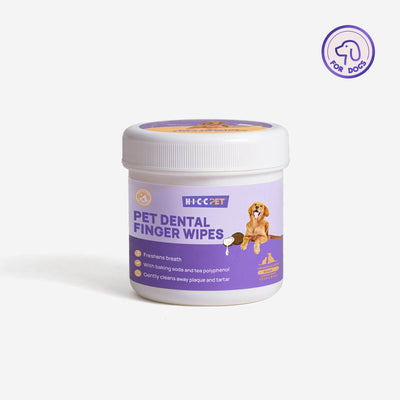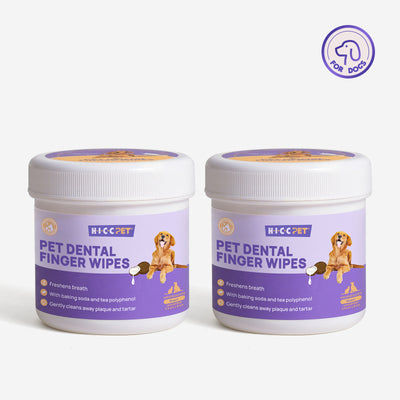It’s spooky season! You know what that means…Halloween costumes, decor, trick or treating, etc. Many of us absolutely love it but may be your pet’s personal horror show unless you take the proper precautions to keep pets safe for Halloween. In this blog, we will explore some essential tips and precautions to ensure the safety and well-being of our furry companions during this spirited holiday season. From costume considerations to candy cautions and everything in between, let's dive in on how to keep your pets safe and sound this Halloween.
1. Costume or No Costume?

This question varies based on a multitude of factors: Does your pet do well in costumes? What environment will they be in? And what is the costume exactly? These are all questions to keep in mind before deciding if your pet should sport a Barbie costume or not. Not all pets are created equal, and this includes their tolerance for wearing clothing. Shoving your dog or cat into a costume can create an unnecessary amount of stress for them.
You may be able to build up your pet's tolerance to clothing and desensitize them with baby steps over time. Keep in mind that younger pets may adapt more quickly, but that doesn't mean an old dog (or cat) can't learn new tricks. This can include starting them out by wearing clothing for 15-20 seconds with positive reinforcement so as not to push their limits.
When choosing a specific costume, there are many factors to keep in mind. Pets should be able to move around freely in their costume without any restrictions on movement, as well as no restrictions on the ability to see, breathe, or bark. Costumes should be inspected closely to remove any choking hazards such as beading or little dangly bits. Pets should absolutely not be left with their costumes on while unattended. When left unsupervised, pets may get twisted up in their costume, resulting in strangulation.
2. Keep the Candy Out of Reach

We all enjoy some candy on Halloween, and we love to share (OK, maybe just some of us don’t like to share), but it's essential to remember that while some human treats are fine to share with your dog or cat, there are numerous exceptions that should never be within reach.
To start with the obvious: CHOCOLATE.
Chocolate is the foundation of the most classic Halloween candies, from Milk Duds to Twix to Hershey Bars. Chocolate is one of the best-known toxicities to dogs and cats because it contains a chemical called theobromine, which is very similar to caffeine. Dogs and cats are unable to metabolize theobromine like people can, and the amount of theobromine depends on the type of chocolate; the darker and more bitter the chocolate, the more theobromine it contains.
The second most common type of toxicity from candy to dogs is artificial sweetener xylitol. Even small amounts are toxic and often result in a trip to the ER. It's used often in sugar-free gum, as well as in sugar-free baked products, and ingestion of xylitol can result in a swift and drastic decrease in blood sugar levels, leading to hypoglycemia. Only 0.1 grams per kilogram is enough to cause hypoglycemia in dogs, and those who ingest xylitol often display symptoms within 30 minutes to several hours, including confusion and seizures.
Other common Halloween treats that are toxic to pets include:
- Raisins and chocolate-covered raisins
- Macadamia nuts
- Candy corn
- Caramel apples
If your dog or cat ingests any of these, call the ASPCA Animal Poison Control Center at (888) 426-4435.
If you'd like your pet to join in on the fun of enjoying delectable delights, there are still multiple options to let them in on the fun. Pumpkin, as well as pumpkin seeds, are both safe and beneficial snacks for pets while still remaining festive! Both plain popcorn as well as apples are also two other safe alternatives for your pets to enjoy this Halloween season. If you want to make your own, there are a variety of DIY Halloween treats you can make for your pets as well as purchase. While we want them to enjoy the celebrations with us, being able to keep pets safe for Halloween is the number one priority.
3. Mindful Halloween Decor

It appears that Halloween enthusiasts are becoming increasingly creative with their spooky decor both inside and outside their homes. However, it's important to note that some Halloween decorations can pose potential hazards for pets. While some pets may completely ignore the decorations, it's essential to exercise caution.
Halloween decorations can introduce various choking hazards, turning your Halloween into a real-life scary movie, and those ER bills are just as frightening. These hazards can include loose eyeballs on a coffee table, dangling decorations with pieces that may fall on the ground, and even costume pieces coming loose, all of which present a risk of choking for your pet.
Decorations that drape can also pose potential tangling risks for pets that enjoy venturing into snug corners. This is particularly concerning, as animals may accidentally stumble into these tangles when frightened or startled. Objects like fake cobwebs, netting, ghost cloths, or twinkling lights all have the potential to cause entanglements that could trap and ensnare our furry friends. Make sure to keep these considerations in mind when adorning your home with spooky Halloween decorations to ensure the safety and well-being of your furry companions.
4. Beware of Trick or Treaters (and Escape Artists)

If you live in an area where the streets are filled with small children in colorful costumes, knocking on every door to say "trick or treat," and you have a pet, you should take extra precautions. This situation can lead to various actions that may cause your pets to become stressed and envious, creating a perfect opportunity for them to slip away while you're distracted by the child-sized zombie at your door. How you prevent this can significantly differ depending on your home and your pets.
If your pet has a habit of darting to the door or lingering nearby, it's best to keep them away from the door as much as possible or block their escape route. Some homes may be able to keep a dog gate up throughout the entire night for an optimal solution. Other preventative measures include keeping pets locked away in a separate part of the house or their crate, keeping them on a leash, or locking them outside if the weather permits. If you want to take your dog trick-or-treating, it is highly recommended to leave them at home, as people in costumes and masks can trigger certain dogs, increasing the risk of strangers approaching them, especially if they are in costume.
Now, here's something for the cat owners. Do cats, especially black cats, get stolen and killed for archaic rituals around Halloween? This has been a common folklore that circulates every Halloween. While it may be a myth, we highly recommend keeping those kitties locked up on Halloween night. The abundance and influx of people walking the neighborhood may cause your cat to become stressed, and there is an increased risk of them getting hit by cars as drivers are distracted by the flickering lights and spooky scenes in neighbors' yards.
5. Keep Identification Up to Date

Ensuring your pet's safety on Halloween involves more than just keeping their identification up to date; it's a critical step during the holiday season. This entails verifying that their microchips and ID tags on their collars are current. In the unfortunate event of a pet escaping on Halloween, having clear identification significantly expedites the process of reuniting with your beloved companion. Even if your pets typically do not wear collars indoors, it's advisable to have them wear one throughout Halloween night for added security.
Conclusion
In conclusion, as we prepare to embrace the spookiness of Halloween, let's remember to keep our beloved pets safe during this festive season. Whether it's deciding on a costume that ensures their comfort, protecting them from harmful candies, or being mindful of hazardous decorations, taking precautions is essential. Be careful around trick-or-treaters, especially for escape-prone pets, and consider keeping your cats indoors. Most importantly, keep your pet's identification up to date, ensuring their safety in case of an unexpected escape. Halloween can be a joyful celebration for both humans and our furry friends if we prioritize their well-being and take the necessary steps to protect them. Let's make this spooky season safe and enjoyable for all!
Please note that the information provided in this article is for educational and informational purposes only. We are not veterinarians, and the content shared here should not be considered professional veterinary advice.
If you have any questions regarding copyrights or the use of materials in this article, please contact us for clarification.







Thanks for your interaction and support.